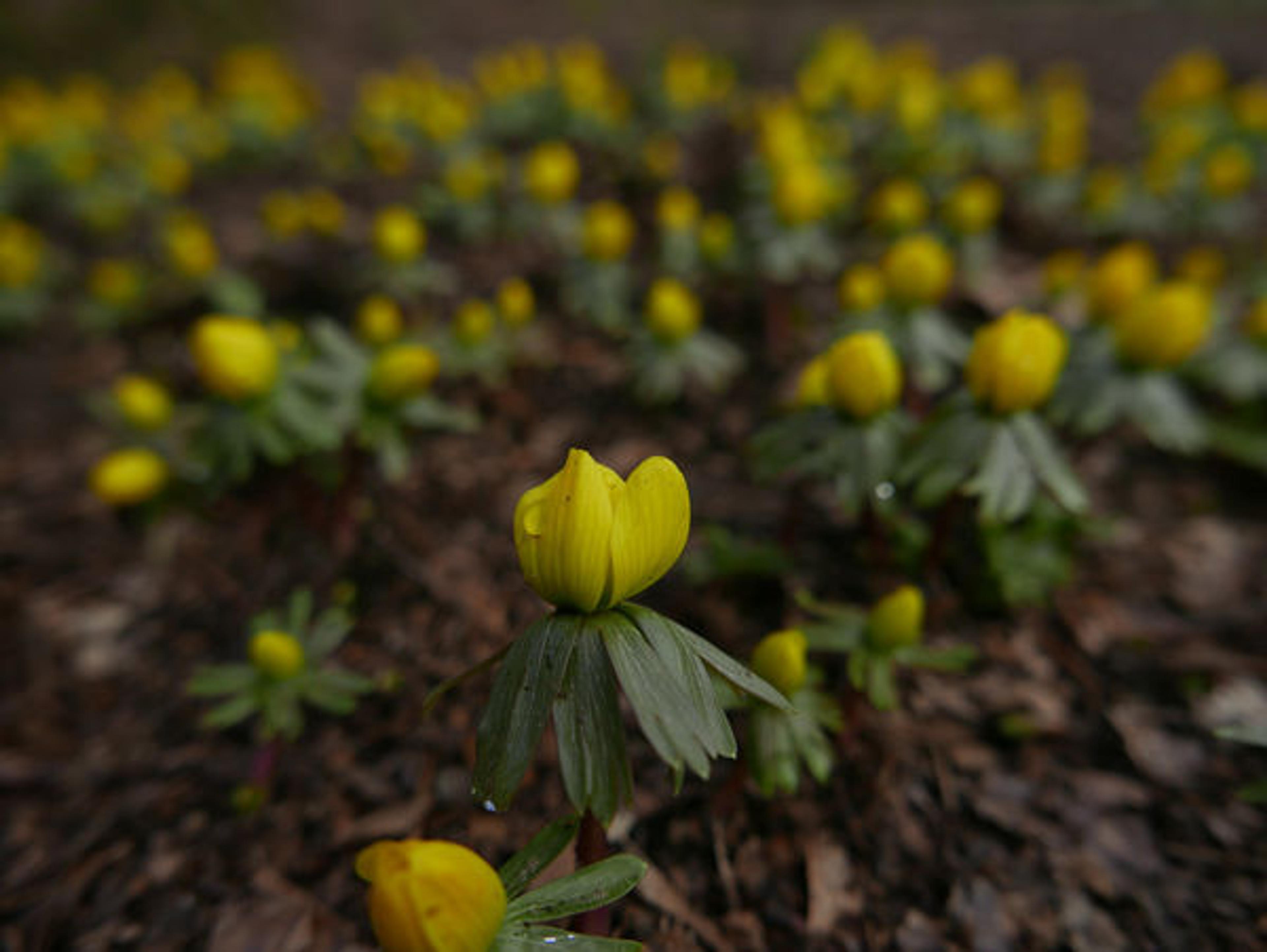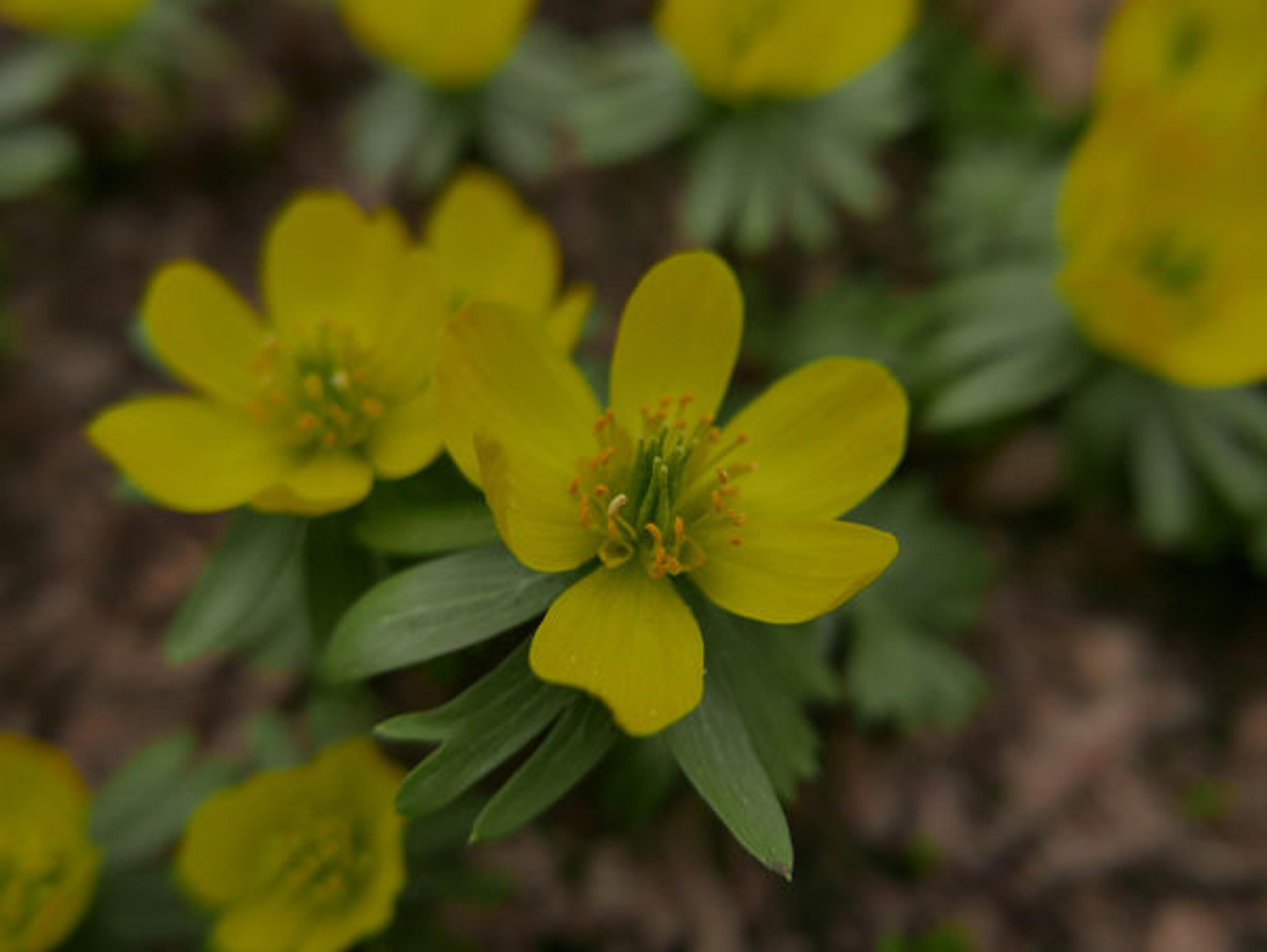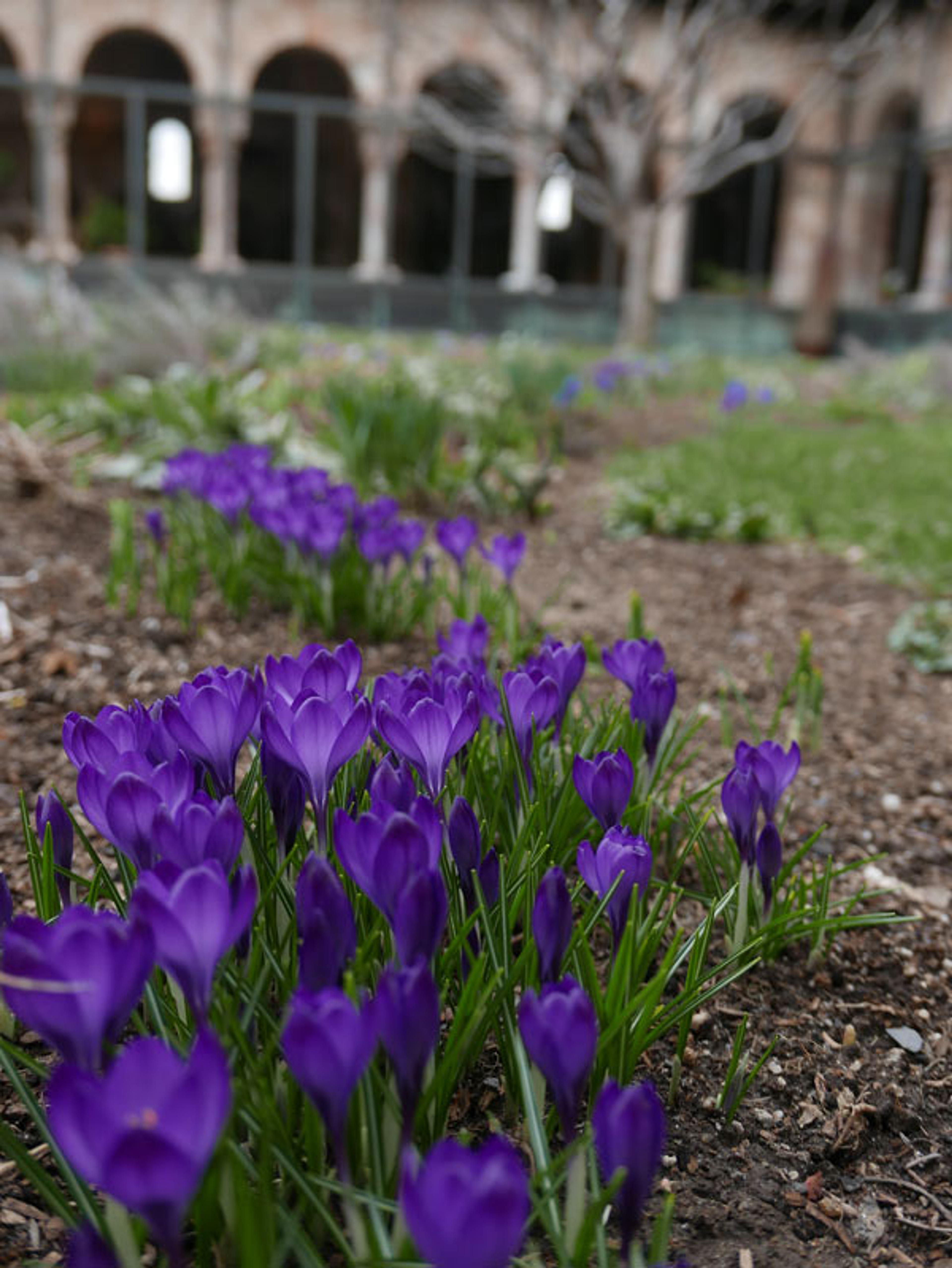
Winter aconite (Eranthis hyemalis). All photographs courtesy of the author
«The winter aconite (Eranthis hyemalis) has just revealed its cheerful, yellow blooms. Most years, winter aconite is one of the earliest winter-blooming bulbs, appearing in January and February, but this year's cold temperatures have delayed its arrival. »
Originating in the Mediterranean region, winter aconite did not warrant extensive attention by European medieval herbalists. It first appeared in later herbals where it was known as winter wolf's bane and placed in the genus Aconitum. It was purported to share similar properties with the well-known monkshood, or wolf's bane (Aconitum napellus), a highly toxic garden plant that was employed as a poison and an antidote. Though winter aconite and monkshood are in the same family, Ranunculaceae, the two are not often linked in modern times. Its common name, winter aconite, is a vestige of its former link with Aconitum.
Misidentification is by no means a medieval phenomenon. Although it does bear a superficial resemblance to monkshood by virtue of its lustrous leaves and mild toxicity, winter aconite is more often confused with its later-blooming relatives, the invasive lesser celandine (Ranunculus ficaria) or the native marsh marigold (Caltha palustris).

Open winter aconite (Eranthis hyemalis)
Winter aconite was first noted in cultivation in Britain in the late sixteenth century and recorded in A Catalogue of Plants Cultivated in the Garden of John Gerard, in the Years 1596–1599. It is discussed extensively in English botanist and horticulturist John Gerard's The Herball, or Generall Historie of Plantes wherein the description states that "whole leaves come forth of the ground in the dead time of winter, many times bearing the snow on the heads of his leaves and flowers." Gerard continues, "Yea the colder the weather is, the deeper that the snow is, the fairer and larger is the flower; and the warmer the weather is, the lesser is the flower."
We can attest to this phenomenon, as the winter aconite appears exceptionally beautiful this spring.

Elsewhere in the gardens, the spring crocus and reticulated iris are in full bloom.